I just bought a new SGS3 (I9300 - NOT LTE) and hoped to continue with developing an OpenGL ES (2) application. Unfortunately when I compile it I don't see anything.
I get the following LogCat error messages:
D/libEGL(6890): loaded /system/lib/egl/libEGL_mali.so
D/libEGL(6890): loaded /system/lib/egl/libGLESv1_CM_mali.so
D/libEGL(6890): loaded /system/lib/egl/libGLESv2_mali.so
E/(6890): Device driver API match
E/(6890): Device driver API version: 23
E/(6890): User space API version: 23
E/(6890): mali: REVISION=Linux-r3p2-01rel3 BUILD_DATE=Wed Oct 9 21:05:57 KST 2013**
D/OpenGLRenderer(6890): Enabling debug mode 0
I also installed a custom rom (cyanogenmod 11 - snapshot M4) but I get the same problem.
When I start the app, I get the blank screen without any vertices rasterized. The clear color works so far so the basic functionality of OpenGL is working.

To be sure I tried it with the basic tutorial from the Google Developers page with GLES 1 and GLES 2. Both don't work! Here are the screenshots:
http://developer.android.com/training/graphics/opengl/index.html
The project itself works fine on my old Galaxy S1 (also on Cyanogenmod) but does not show anything else than a blank screen on my SGS3.
Is it possible that the Mali-400 MP4 graphics driver / system interpret GL commands differently? Is there a different way of calling than with the Hummingbird GPU from my SGS1?
Has anyone an idea what to do? Is this a problem with my phone or eclipse? Or is this normal - just my lack of understanding? How can I fix this problem?
------- EDIT : SOLUTION FOUND -------
Okay, I found the error. The google document shows a "wrong" the multiplication of the matrices in the vertex shader:
uniform mat4 uMVPMatrix;
attribute vec4 vPosition;
void main() {
gl_Position = uMVPMatrix * vPosition;
}
This doesn't seem to be a problem for my old Galaxy S1 but somehow the S3 (or the Mali GPU) is picky about this. I changed the order of multiplication to this:
uniform mat4 uMVPMatrix;
attribute vec4 vPosition;
void main() {
gl_Position = vPosition * uMVPMatrix;
}
And it works (also on the S1). Still not sure why the S1 works fine with both versions but this solves the problem.
Thanks for your help!